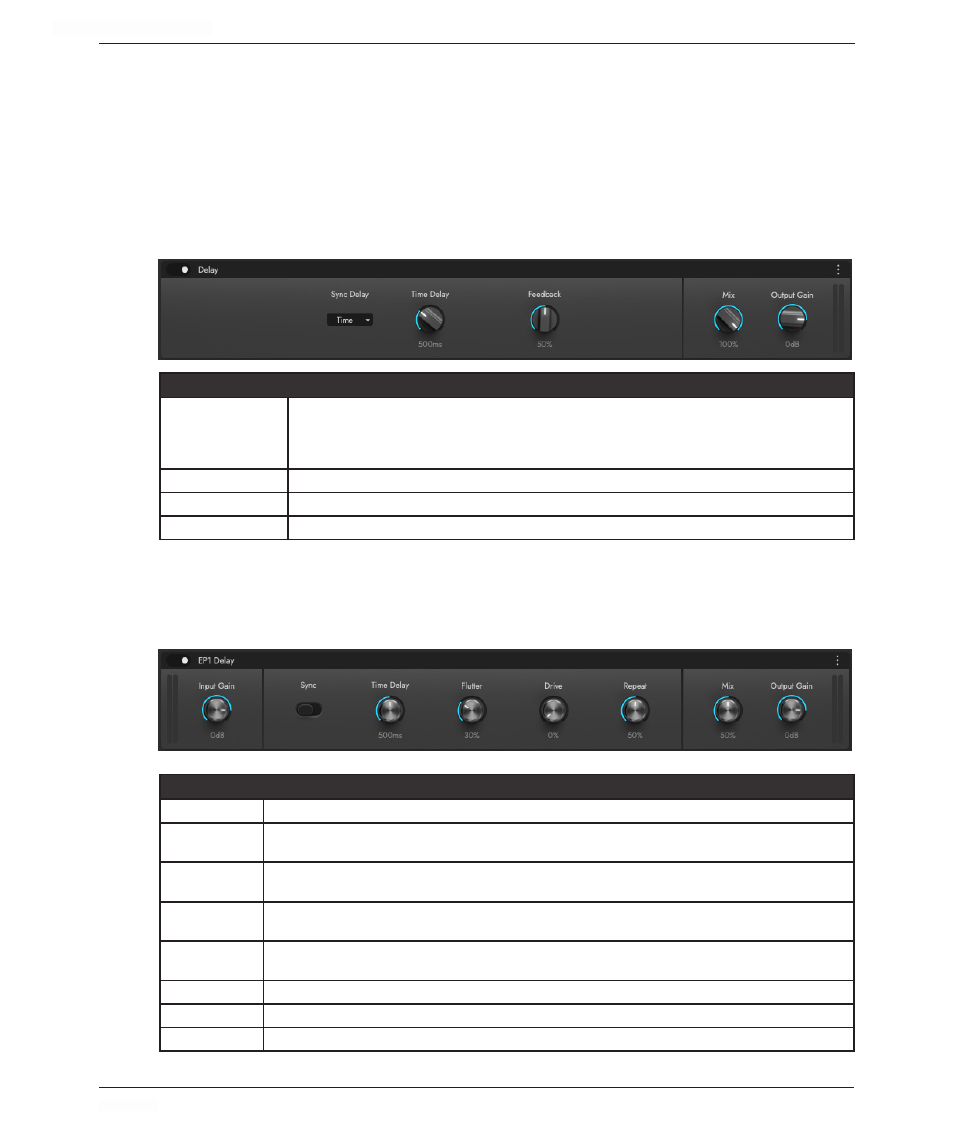6 delay, Delay, Ep-1 delay – EastWest Hollywood Orchestra Opus Edition Virtual Instrument Plug-In (Download) User Manual
Page 218

HOLLYWOOD ORCHESTRA OPUS EDITION
<
CHAPTER 6: MIX
218
<
6.2.6
Delay
Delay effects repeat the input signal at distinctly separate intervals that typically
fade out, or decay, over time. There are 2 insert effects in this category:
• Delay
• EP-1 Delay
Delay
A simple delay unit that can be synced to tempo, or operate in free time.
CONTROLS
Sync Delay /
Time Delay
Select between Time (free time) or Sub-Division (sync to tempo). When a sub-division is selected,
the Time Delay disappears and the tempo is synced to the selected sub-division. When Time is
selected in this menu, the Time Delay knob becomes available with values ranging between 1
millisecond and 5 seconds.
Feedback
Control the decay time (amount of delay repeats) from minimum (0%) to maximum (100%).
Mix
Controls the amount of the affected signal relative to the original (dry) signal.
Output Gain
Boost (+24 db) or attenuate (-60 db) the audio output gain.
EP-1 Delay
This effect models the Echoplex Delay designed in 1959, which uses magnetic tape to
create it’s highly prized vacuum tube delay sound.
CONTROLS
Input Gain
Boost (+24 db) or attenuate (-60 db) the audio input gain.
Sync
When Sync is enabled, the Quantize menu is made available. When Sync is disabled, the Rate (free)
knob is made available.
Delay (sync)
When Sync is enabled, the Quantize menu can be used to select a sub-division to which the delay
will be synced to.
Delay (free)
When Sync is disabled, the Rate knob can be used to set the rate of change between values of 20
milliseconds to 2 seconds.
Flutter
Control the intensity of flutter, which is the pitch wobble created between tape speed variations on
the original Echoplex unit, between 0% and 100%
Drive
Control the intensity of harmonic distortion added to the delay line between 0% and 100%.
Repeat
Set the decay time of the delay line between 0% (fast decay) and 100% (longer decay).
Mix
Controls the amount of the affected signal relative to the original (dry) signal.
